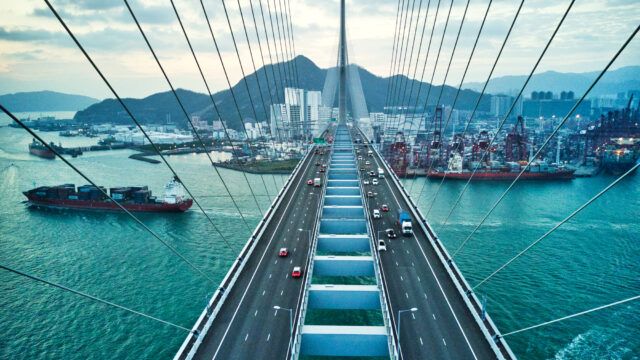The appeal of infrastructure and the potential income benefits it can offer is gaining traction among investors who have seen a dramatic weakening in equities amid so many market challenges.
“This is because infrastructure returns are driven by investment plans in essential services, which span 10 or more years into the future,” said Shane Hurst, managing director and portfolio manager at ClearBridge Investments, a specialist investment manager of Franklin Templeton.
Such returns accelerate over time while providing considerable predictability compared with equities, he explained.
Attractive features
That comes from exposure to assets such as water, electricity and gas transmission and distribution, for which a regulator determines the revenues that a company should earn on its assets.
At the same time, demand is steady. “This mechanism leads to a relatively stable cash flow profile over time,” Hurst added.
Investors can also benefit from being focused on user-pay assets, which include airports, ports, rail, toll roads and communication infrastructure.
“These are long-term concession contracts leveraged to the growth in the underlying economy, which means they are tied to the volume of people and cargo flying, moving through ports and along railways, or using cellular towers,” said Hurst.
A hedge against inflation
Fundamentally, ClearBridge believes the ability of infrastructure to act as an inflation hedge in investment portfolios is enticing investors.
For example, the hike in commodity prices has had little impact so far on regulated assets, said Hurst. Plus, infrastructure can typically adjust to inflationary environments due to the largely pre-programmed way it builds inflation into regulation and contracts.
“Utilities regularly reset their allowed returns with regulators to account for inflationary cost increases,” he explained. “And user-pay assets, such as toll roads or rail, as both types of infrastructure generate inflation-linked revenues.”
More broadly, the essential nature of assets for consumers, such as water, electricity, gas and toll roads, create pricing power.
“Just as importantly, the income we look for from infrastructure is underpinned by long-term contracts, which ensure a steady flow of revenue over a long period of time,” Hurst added.
Benefitting from the net zero push
Interest in infrastructure also stems from the central role it is playing in efforts to decarbonse the global economy.
For example, annual capital spending in the power sector is expected to increase from $760bn in 2019 to $2.5trn (in 2019-dollar terms) by 2030 – with roughly half spent on solar, wind and other renewable energy generation, and a third on modernising and extending electricity networks.
At the same time, there is renewed interest in energy infrastructure pipelines as energy security has become a strategic priority, especially in Europe. In addition, ClearBridge sees midstream pipelines starting to facilitate an energy transition through hydrogen or carbon capture and storage.
“There are several ways to invest in infrastructure, and our preference is to focus on a diversified group of large, liquid and high-quality infrastructure companies around the world,” explained Hurst.
















